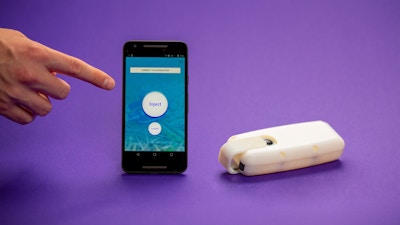Over 15 million Americans are at risk of anaphylaxis, a severe allergic reaction triggered by exposure to certain foods, materials, medications, and insect bites. Every three minutes, a food reaction sends someone to the emergency room.
In most individuals, anaphylactic shock can be prevented by administering the counteracting drug epinephrine, as soon as an attack begins. Yet, due to the rapid and unrelenting progression of symptoms and the lack of a reliable diagnostic test for acute allergic reaction, death from anaphylaxis still occurs and prevention remains difficult to achieve.
The Wyss Institute and the KeepSmilin4Abbie Foundation have partnered to advance research and development efforts in the early detection and treatment of anaphylaxis. The partnership aims to develop a deep understanding of the processes heralding an oncoming anaphylactic episode at the earliest stages in order to develop a wearable device for both rapid detection of anaphylaxis onset and automated injection of epinephrine.
Most medical problems can be solved with early detection. For anaphylaxis, this is a subjective assessment by the patient that can cause delays in treatment. We believe technology-enabled early detection and treatment will remove ambiguity in the assessment phase, providing patients with early notification and treatment that saves lives.
The immediate goal of the effort is to understand the physiological and biochemical signals that occur with anaphylaxis and then develop a wearable device that continually monitors these signals. When anaphylaxis is detected, the device would alarm the patient, send signals to caregivers by cell phone, and auto-inject the epinephrine therapeutic, helping save the lives of children and adults who suffer from severe allergies.
Along this path, multiple technology components are being developed that offer additional potential for broader application. Biochemical and physiological analysis methods are being created to continuously monitor biomarker levels and physical alarm signals help determine anaphylactic risk. A newly developed sensor technology called abbieSense can detect therapeutically relevant levels of histamine and determine the severity of the allergic reaction within five minutes, saving patients precious time. These components will be integrated by a proprietary computer algorithm to actuate a response leading to the rapid administration of epinephrine through an engineered wearable epinephrine auto-injector.
This technology is available for licensing.

1/11 Students gather to from a 'human' smile on the first “Keep Smilin’” day at Hopkinton High School. 
2/11 Adam Zapotok sketches mock-ups of an automated anaphylaxis early detection and treatment device. 
3/11 The research team reviews and discusses device designs. 
4/11 Rami Hamzey investigates injection mechanism for a wearable device. 
5/11 The research team discusses injection mechanics. 
6/11 The research team discusses injection mechanics. 
7/11 The research team reviews and discusses wearable device designs. 
8/11 The research team testing approaches to data collection and signal processing. 
9/11 The research team testing approaches to data collection and signal processing. 
10/11 The research team testing analyzes data from anaphylaxis patients to seek out early warning signs. 
11/11 The research team discussing Project ABBIE.
